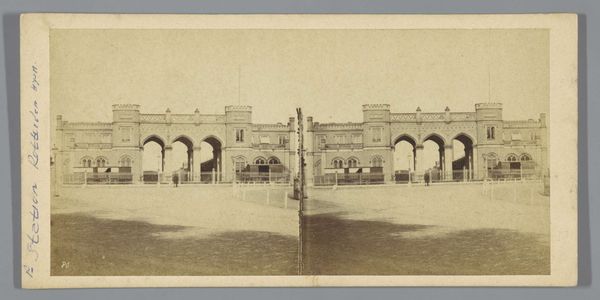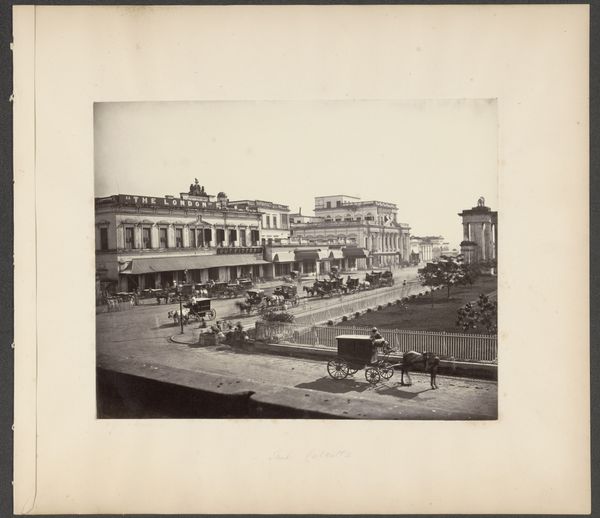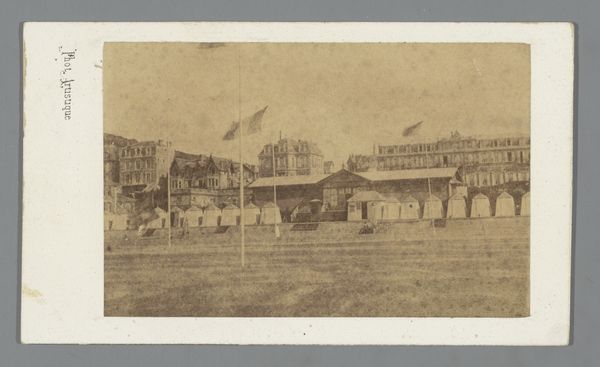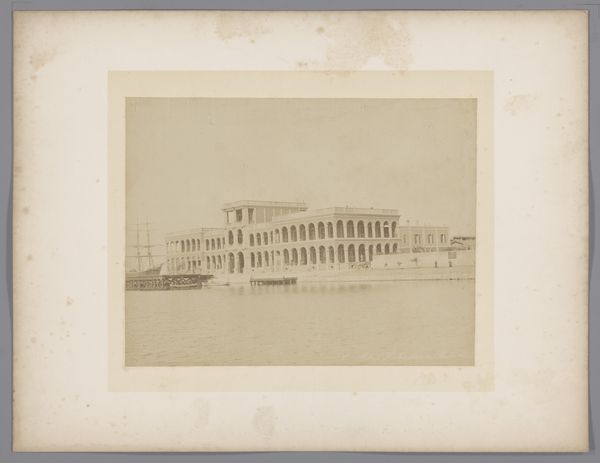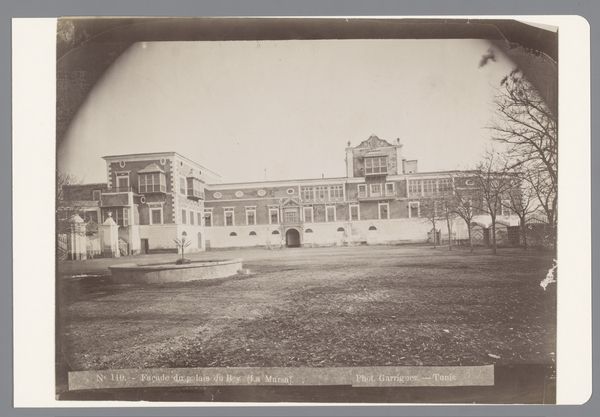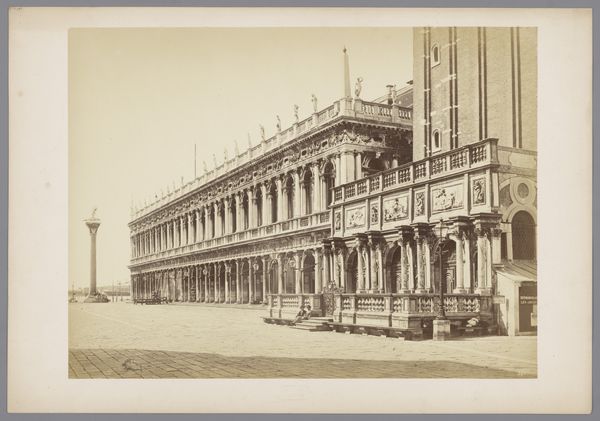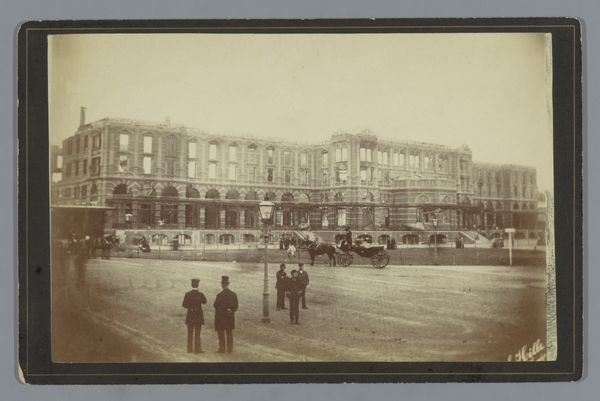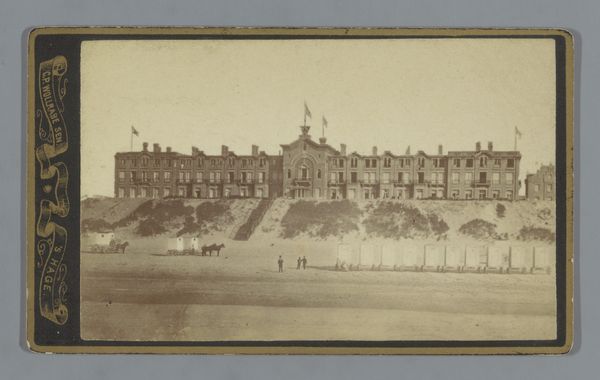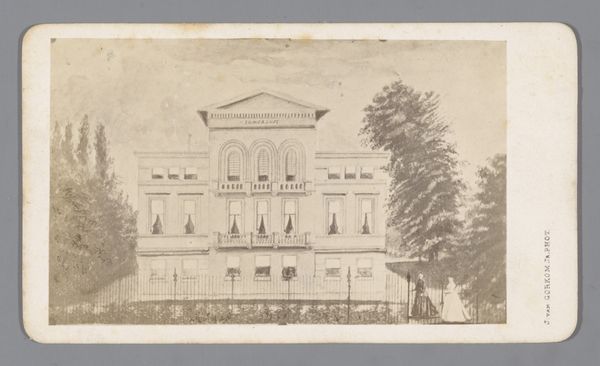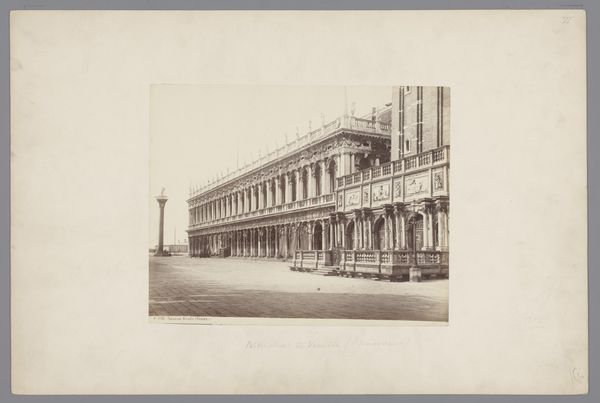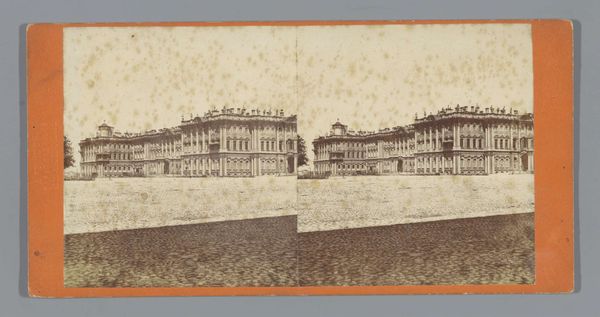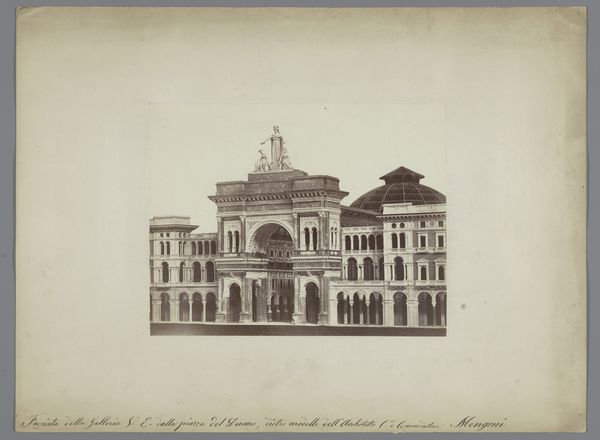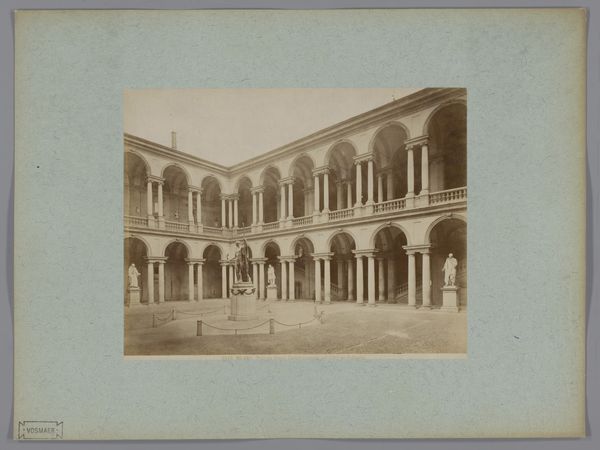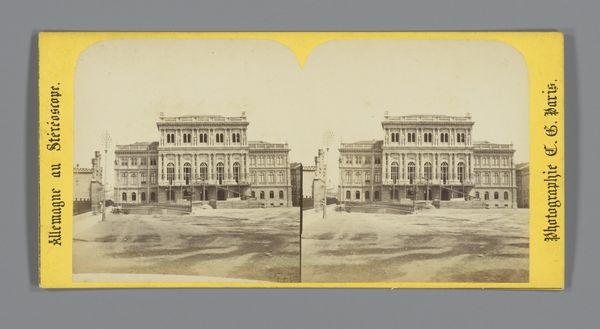
print, photography, gelatin-silver-print, architecture
# print
#
photography
#
gelatin-silver-print
#
cityscape
#
architecture
#
building
Dimensions: height 92 mm, width 142 mm
Copyright: Rijks Museum: Open Domain
Curator: This gelatin-silver print, taken by Carl Philip Wollrabe around 1870 to 1885, offers a "Side View of a Building in Scheveningen." It is a glimpse of architectural and urban history. What's your first take on this scene? Editor: Haunting. Like a sepia-toned dream. I'm drawn to the stillness—the long façade stretching out, a little unsettling because of the lack of figures milling around. You almost expect ghosts of vacationers to stroll by. Curator: The process would've required long exposures. What looks like emptiness could just be movement imperceptible to the lens. Wollrabe was part of a burgeoning photographic industry that captured Dutch towns for expanding tourism. Think of the labor—the mining of silver, manufacturing of glass plates, the chemistries—all supporting this view of a building in a seaside town. Editor: I keep coming back to the building itself. Look at the repetition of those arched windows on the ground level and the regimented smaller ones above, capped by flags. What’s its function, do you think? Some kind of bathhouse or grand hotel, maybe? All those arches suggest accessibility, openness… or is that the intent? Curator: Indeed. Scheveningen became a fashionable resort in the 19th century. Wollrabe aimed to capture progress, to sell these prints to tourists wanting a keepsake, maybe as a way to market Scheveningen, its appeal and access, thus encouraging further consumption, building, travel… all connected. Editor: It's funny, isn’t it? Here we are, drawn to its antique charm and feeling this faint melancholy, completely ignoring, as usual, the building’s modern function in this landscape of leisure. Maybe those arches are echoes, then, reminders of a society eager to be modern? Curator: The gelatin-silver process itself became ubiquitous due to its relative ease, becoming almost synonymous with photographic production for decades. But what of that side view itself? Wollrabe chose this oblique perspective. It avoids grandeur. Editor: Exactly! I suppose it keeps it honest. The light is lovely, almost painfully honest. Well, this building portrait holds a complex moment, doesn’t it? Not just a view of a façade, but a lens on industry and human ambition, really. Curator: Ultimately a beautiful summation and a perfect look into Wollrabe's architectural photograph.
Comments
No comments
Be the first to comment and join the conversation on the ultimate creative platform.
